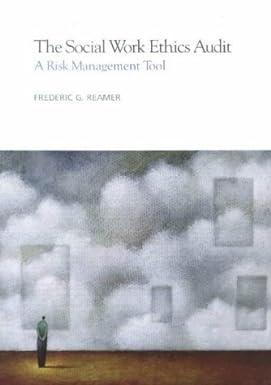Question
FOR APPLE Objective: To analyze the financial statements of a publicly traded company Obtain an annual report from a publicly traded corporation that is interesting
FOR APPLE
Objective: To analyze the financial statements of a publicly traded company
Obtain an annual report from a publicly traded corporation that is interesting to you. Be sure the company has property and equipment, intangible assets, and long-term debt on its balance sheet. Using techniques you have learned in the previous weeks, respond to the following questions.
What is the amount of property and equipment on the balance sheet for the two most recent years? What is the amount of accumulated depreciation and the depreciation expense? What amounts are on the cash flow statement for the most recent year that relate to depreciation, gains and sales of property and equipment, and purchases and sale of property of equipment? What amounts are permitted for inclusion in the capitalized cost of property and equipment?
Looking at the footnote disclosures of the company, what are the individual components of property and equipment? For example, what are the amounts for land, building, equipment, accumulated depreciation, and so forth? How do companies account for nonmonetary exchange and dispositions of property and equipment?
Does the company have intangible assets? If so, what are the types of intangible assets (patent, copyrights, etc.) and their amounts? What is the amount of accumulated amortization and amortization expense? What amounts on the most recent cash flow statement relate to the purchase and sale of intangible assets? How do intangible assets differ from property and equipment? What costs do we include in intangible assets?
Does the company have goodwill? What are the footnote disclosures relating to goodwill and the related acquisition? Please also describe the calculation of goodwill and how we account for differences between fair value and book value of assets acquired.
What are the company's depreciation methods? What is the range of estimated useful lives used for depreciating its assets? Does the company use the same depreciation methods for financial statements and tax returns? If not, please describe the methods used for tax purposes.
What are the company's footnote disclosures relating to impairment? Please also describe how to determine whether an impairment exists and how to calculate the impairment loss.
What are the amounts and descriptions of the company's current liabilities for the most recent year? Does the company have any contingent liabilities? If yes, please describe them. Does the company have any subsequent events disclosed in its footnotes? If so, please describe them.
What are the amounts and descriptions for all of the company's long-term liabilities on its balance sheet for the two most recent years? What is the interest expense for the two most recent years? What amounts are included in the cash flow statements for proceeds from issuance of debt and repayment of debt for the most recent year? For each note payable discussed in the footnotes disclosures, what is the interest rate, total amount borrowed, and maturity date?
Does the company have bonds payable? If so, what are the amounts? Please also describe how bonds payable differ from notes payable and how to account for the issuance of bonds at par, at a discount, and at a premium. How is the discount and premium amortized? What is the effective interest method?
Does the company have capital leases? If so, what are the amounts and terms of the leases? What are the four criteria for a lease to be considered a capital lease? What are the additional criteria for the lessor? What is the difference between a sales-type lease and a direct-financing lease?
http://files.shareholder.com/downloads/AAPL/4590692363x0x913905/66363059-7FB6-4710-B4A5-7ABFA14CF5E6/10-K_2016_9.24.2016_-_as_filed.pdf
Step by Step Solution
There are 3 Steps involved in it
Step: 1

Get Instant Access to Expert-Tailored Solutions
See step-by-step solutions with expert insights and AI powered tools for academic success
Step: 2

Step: 3

Ace Your Homework with AI
Get the answers you need in no time with our AI-driven, step-by-step assistance
Get Started


